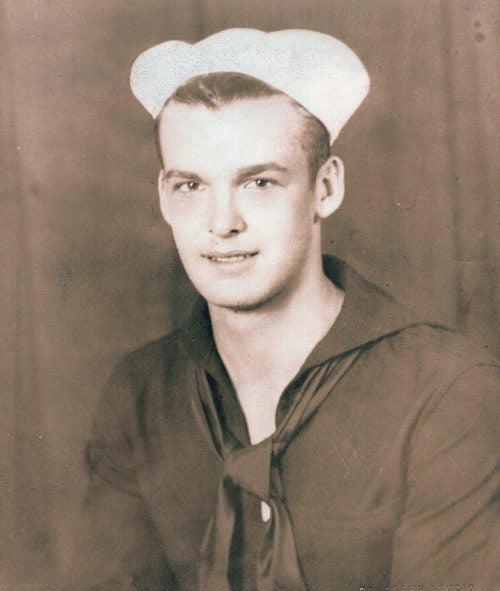- Seaman
- WW II
Biography
Albert A. Lowry was born in New York, New York on 2 September 1924. He was one of four children born to Moses and Alice Lowry. Albert graduated from Wharton High School, Wharton, New Jersey in June 1940. He was an excellent scholar and athlete. He was a member of the football and basketball teams. Albert entered the Rhode Island State College (RISC) with the Class of 1944 and participated in the Army ROTC program. He was a member of Theta Chi Fraternity and attended RISC for only one year.
Albert wanted to enlist in the United States Army. Because he was under age, he needed parental approval; and his Dad would not sign for him, a decision Mr. Moses Lowry, a high school principal, regretted all his life. The United States Merchant Marine did not have the same age requirement, and Albert enlisted in August 1941. He headed off to attend the rigorous 90-day boot camp at the United States Maritime Service Training Station, St. Petersburg, Florida. After graduating from boot camp, Apprentice Seaman Lowry was sent to New Orleans, Louisiana to the U.S. Maritime Service Pool, better known as a graduate station to await orders for assignments to merchant ships that carried troops, supplies and ammunition. Seaman Lowry was assigned to the “Liberty Ship,” the SS John L. Motley.
On 2 December 1943, the SS John L. Motley was anchored with 26 other Liberty Ships waiting to be unloaded in Bari Harbor, Italy. Unknown only to a few, was that the Liberty Ship, the SS John Harvey, had a cargo of deadly mustard gas. By that point in the war, the strategic initiative had passed to the Allies; and Germany was on the defensive on all fronts. Adolf Hitler’s forces had sustained a major defeat at Stalingrad, and they had lost North Africa as well. The Allies were now on the European Continent, slowly inching their way up the Italian peninsula. Hitler, it was said, was not a great advocate of chemical warfare, perhaps because the Führer himself had been gassed during World War I. He was, however, ruthless and might be persuaded to use gas if he believed it would redress the strategic balance in his favor. Intelligence reports suggested that the Germans were stocking chemical weapons, including a new chemical agent called Tabun. American President Franklin D. Roosevelt issued a policy statement condemning the use of gas by any civilized nation, but he pledged that the United States would reply in kind if the enemy dared to use such weapons first. The SS John Harvey was selected to carry a shipment of poison gas to Italy to be held in reserve should such a situation occur.
Seaman Lowry was aboard the SS John L. Motley when it was bombed by 105 German fighter bombers. The surprise air attack began at 7:25 p.m. which resulted in the sinking of 27 cargo ships. The SS John L. Motley was carrying a cargo of ammunition with 30 crew members. The ship received a direct hit, exploded and sadly sank with all crew members. There were no survivors. The SS John Harvey with its cargo of mustard gas caught on fire and exploded. The mustard gas-laced oil now coated the bodies of Allied seamen as they struggled in the water, and many swallowed the noxious mixture. Even those not in the water inhaled liberal doses of gas, as did hundreds, perhaps thousands, of Italian civilians. The Bari Raid became known as the “Little Pearl Harbor,” a tragedy made worse by the perceived exigencies of wartime secrecy.
Seaman Albert Alexander Lowry died at the age of 19. He volunteered to serve his country at a critical time in history. Like so many of his shipmates, he never came home. He remains with his shipmates buried at sea in the SS John L. Motley. His family placed a marker at the River Bend Cemetery, Westerly, Rhode Island, in his memory. He is a heroic member of the “Great Generation.”
Education
1944

